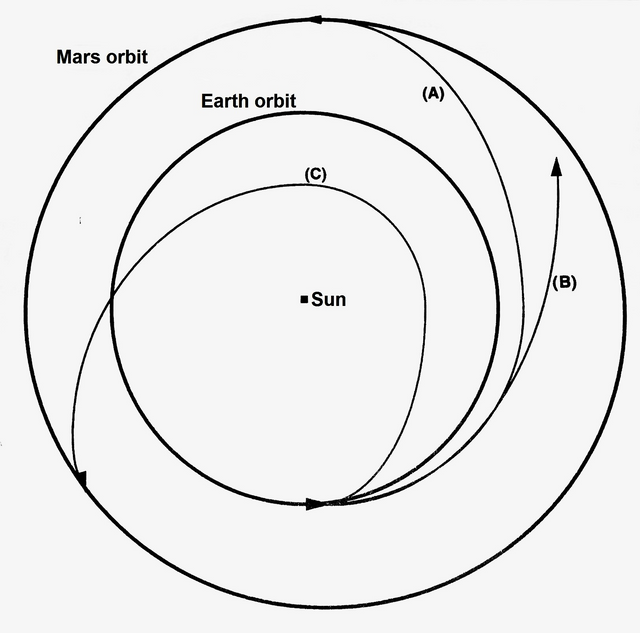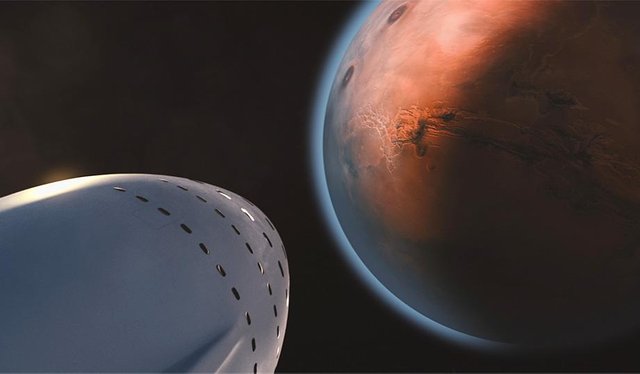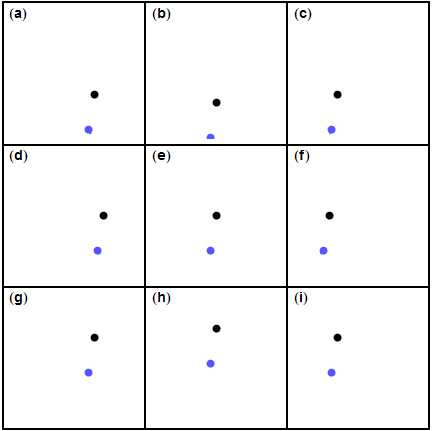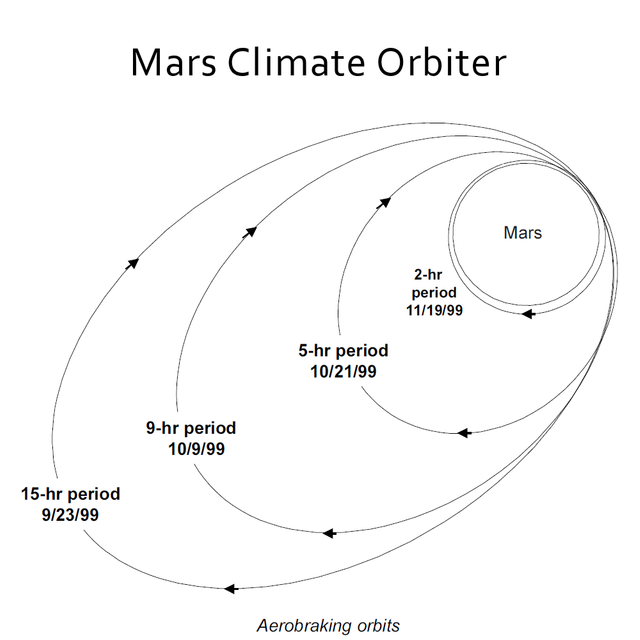We have launched a rocket to MARS! Will it get there and how do we stop it once it's there?
This is a series of easy to understand space mechanics and my personal take on trying to educate new people into what space is and the mysteries of science in general. I am a Software Engineer and I have worked for 11 years in the Aviation Industry while also being a science and space geek. My goal is to inspire you to keep an open mind about science and to consider a science career.

On our way to MARS
In the previous article we found out about the mechanics of a rocket launch , attaining orbit and how to do a Hohmann transfer maneuver. In order to get to MARS with the least amount of energy as possible (read it as fuel) we would need to perform a Hohmann transfer orbit with a radius so big that it would eventually get us out of Earth's Sphere of Influence ( the point in which the gravitational pull of the Earth stops being the primary gravitational influence).
There are other ways to achieve a Mars injection orbit but we will focus on the Hohmann maneuver after looking at all of them:

Method A is the Hohmann Transfer Orbit. Its advantage is that it fights the gravitational forces the least but its disadvantage is that it is time consuming although more time spent means that the insertion velocity is also lower.
Method B is the Conjunction Mission which burns a little more fuel but greatly reduces the time spent in transit, although the velocity remains high by the insertion time.
Method C is the Opposition Mission which needs an initial lower Delta-v budget to actually slow down its heliocentric velocity and get closer to the Sun, since it uses the gravitational pull of the Sun to assist in the steering. This is called a gravity assist and we will go there a little later.
There is no right and wrong ways and it's almost always a mission dependent decision. Factors like the payload, hull strength, mission length and the choice of engines might affect the type of insertion used.

Because if you remember what we found out in the last article, in the vacuum of space any force exerted on the spacecraft will continue its effect until a similar but contrary force is used to nullify the first one. It was Newton's first law of motion.
This means that the science fiction movies in which an engine burns for the whole duration of the trip and then it's shut off on arrival and it suddenly stops is fake? Well.. it's called a science fiction movie after all :DBoth videos are the property of Andrew D. Visit him on Youtube for more simulations.

Do we need to have to carry and burn the same amount of fuel to stop?
Maybe not. If we use physics and take advantage of a few extra of its features, we can plan and reduce the weight of the fuel carried to a minimum.
What is a Gravity Assist Procedure?
The process in which the gravity of an astronomical object is used to alter the path and velocity of a spacecraft. Such a procedure can be used to alter the direction, speed up or slow down a spacecraft by using the forces exerted by much a massive object in comparison to the small mass of the spacecraft.
Furthermore, in addition to the velocity change of entering and leaving the gravitational well of a planet (which usually negates itself), by using the astronomical object's relative heliocentric velocity, futher velocity can be added or substracted to and from the spacecraft. If the spacecraft is approaching from a tangential point and passes in front of the planet along its orbit around the sun it will slow down. If the spacecraft intersects the planet from behind of the planet's orbit around the sun, the spacecraft will speed up.
Funny fact: The spacecraft also has a mass which means that the spacecraft is also slowing down or speeding up the planet while doing this maneuver but since the mass difference is astronomical( get the pun?), it's not going to alter its orbit by anything worth calculating.
But there is more, if the planet we choose to visit has an atmosphere, like Mars does. We can use use the higher levels of the atmosphere to slow down our spacecraft.
This is called aerobreaking and it acts exactly like a retrograde burn. It consists of 3 steps taken while still in the late stages of transfer orbit:
Success. By using no thrust or very little we have managed to be captured by Mars in a highly elliptical orbit, and by completing each orbit in which we graze the Martian Atmosphere we decrease the Apoapsis of our orbit and reduce the orbital period (the time to perform a full orbit). Below you have an example of the Mars Climate Orbiter that attempted a similar maneuver. You can see how the orbits successively reduced their period until a circularization was possible:
In the next article I will talk about powered and powerless landings, drogue chutes and parachutes. And I am also going to write something about special types of orbits (Geostationary, Geosynchronous and Lagrangian Points).

Text is mine. This time I learned from your feedback and cut the formulas down. Maybe I will revisit the formulas in a future article & thanks for your awesome support on the last few of my articles. Images are public domain under GNU or Creative Commons; sourced appropriately & most with linked licenses. My rockety text dividers. If you have any other questions I will be more than happy to talk them with you! Thank you for reading and I wish you a perfect week!
Thanks @Mitneb & @SteemEngine for featuring me over and over and over and thanks @shaka for believing and resteeming science!
My other science articles:
How do rockets really get to where they're headed?
Falcon Heavy Launch
Kerbal Space Program Simulator
Using GPS while in flight to track yourself on the globe
Air Traffic Controllers






Hey Alex! Very interesting post, everything summed up nicely, I enjoyed it!
I have one comment, kinda about reality problem, which is the thing atmosphere.
Landing on mars is most difficult because of the very thin atmosphere, as it is blown away by Solar wind. Even "small" objects like curiosity and opportunity rovers had to have extra safety bouncers, parachutes etc.
Now imagine it with complete crew and all the mechanisation needed for settling the first colony (OK, you didn't mention colonization but, we are going in that direction), or some sort of self-constructing station. We will need some extra calculations/power to stop before the impact.
I saw Neil DeGrasse Tyson talking about the ways to slow down in the thin atmosphere, even if the entrance angle is perfect, gonna search for that video around. :)
Anyway, thanks for the very nice post, and keep doing the good work!
I will be adding exactly what you said in the next article about the landings ( powered and unpowered ). I even made a mention in the end about it. I know that we are still in the process of understanding how Mars works but I think we need this experience before we can venture even further. Cheers and thanks for reading!
Isn't
Method BMethod C (edit: fixed my error) the trajectory where you get a gravitational boost from Venus? Just asking.You did a lot of work on this post so have an upvote for the dedication and enthusiasm.
Good luck with your future career whatever you decide it will be.
It is actually C. If you check the second video at 15th second you can see the rocket reaching the Mars in the opposition spot.
Just a photo to make clear what is opposition and conjunction
@alexdory my professors advised whenever I have some not common terms in my presentation to introduce it to the listeners. :) with this image it would be easier for people without knowledge of planet positions to understand.
All the best, Cheers :)
Thank you! In the previous article I introduced them before using them, now I tried to introduce them as I used them but I clearly missed this. It's not easy to write for new people. It's noted now :)
Yeah, you're right. I meant to say Method C. Thx.
Everyone is dreaming to go to planet Mars and I am so curious what's really inside on this planet and what it would look like. This is a nice article and I learned something.
Hi, I found some acronyms/abbreviations in this post. This is how they expand:
It's not something I had given much thought to prior, but this makes a lot of sense. Gravity. That's how we'll get to Mars.
We need to use everything we have because we are behind schedule with the space science. I read somewhere that space tech is way behind aviation tech due to the funding gap between the two industries.
Very believable. The industry has not kept up with people's expectations of where it could have gone in the last 50 years largely because of a lack of funding.
Congratulations @alexdory! You have completed some achievement on Steemit and have been rewarded with new badge(s) :
Click on any badge to view your own Board of Honor on SteemitBoard.
For more information about SteemitBoard, click here
If you no longer want to receive notifications, reply to this comment with the word
STOPCongratulations! This post has been chosen as one of the daily Whistle Stops for The STEEM Engine!
You can see your post's place along the track here: The Daily Whistle Stops, Issue # 47 (2/16/18)
The STEEM Engine is an initiative dedicated to promoting meaningful engagement across Steemit. Find out more about us and join us today!
Again, I feel ecstatic to be chosen. I still have one more episode of the space saga, the LANDING :D
I just took a little break from space to talk about other subjects but I am building pressure towards the blastpipe next week :P
Wow, this was very informative. I need to go back to your other post though to get me a full idea of this series. Thank you for sharing your knowlege!
I highly advise it since the terms used were described there in detail. I felt it would bloat the article to define them everytime. Thanks!
😍
Thanks! Go Science! :D
Congratulations! This post has been upvoted from the communal account, @minnowsupport, by alexdory from the Minnow Support Project. It's a witness project run by aggroed, ausbitbank, teamsteem, theprophet0, someguy123, neoxian, followbtcnews, and netuoso. The goal is to help Steemit grow by supporting Minnows. Please find us at the Peace, Abundance, and Liberty Network (PALnet) Discord Channel. It's a completely public and open space to all members of the Steemit community who voluntarily choose to be there.
If you would like to delegate to the Minnow Support Project you can do so by clicking on the following links: 50SP, 100SP, 250SP, 500SP, 1000SP, 5000SP.
Be sure to leave at least 50SP undelegated on your account.